Cart detail


Boils-le-Prêtre Tower Transformation, Paris
- Typologies Refurbishment Tower Housing Collective
- Material Polycarbonate
- Date 2005 - 2011
- City Paris
- Country France
- Photographer Philippe Ruault Frederic Druot Raymond Lopez Daniel Rousselot
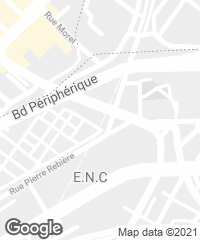
Built in the 1960s by Raymond López, the Bois-le-Prêtre Tower is part of a group of high-rise apartments rising by the north ringroad of Paris. Their radical transformation is set forth as an alternative to the demolition-reconstruction policy initiated by the French government in 2003, and affecting the large residential blocks in the city. This approach offers an opportunity to show that a refurbishment operation is cheaper, quicker and has a better capacity to produce a regenerating effect than a tabula rasa operation (the refurbishing cost is significantly lower).
The existing tower houses 96 social housing units for use on a rental basis. The building system, consisting of concrete slabs and shear walls, and of independent facades, has a great transformation potential. Without altering the original structure and without having to ask residents to temporarily vacate their homes, a double operable skin is installed little by little, and this skin extends the interior space three meters along the entire perimeter of the building, creating a new living space that reduces energy use by 50% and improves sunning and living conditions inside the dwellings.
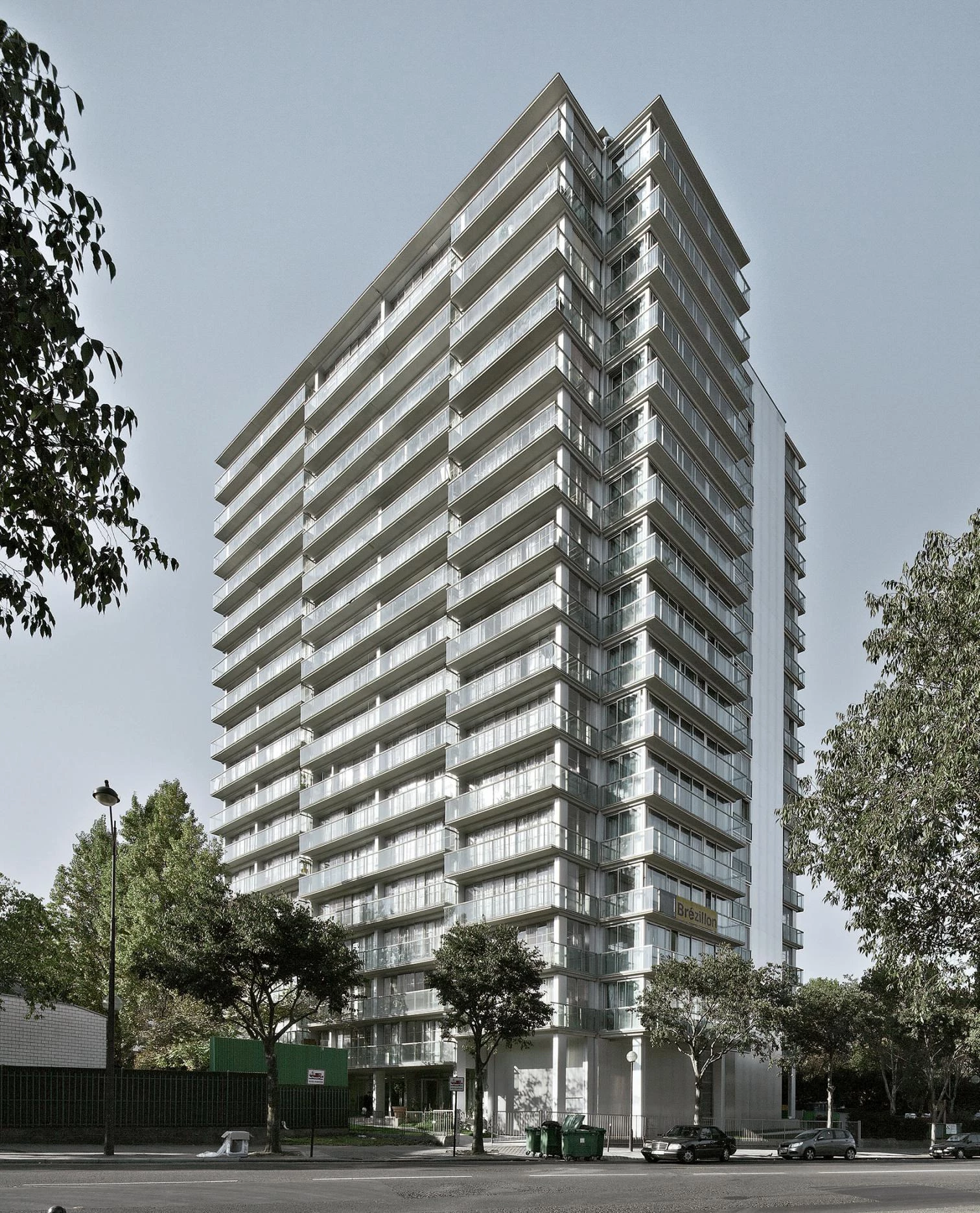
Cliente Client Paris Habitat
Arquitectos Architects Anne Lacaton & Jean-Philippe Vassal, Frédéric Druot
Colaboradores Collaborators Adis Tatarevic, Miho Nagashima, Florian De Pous, Yuko Ohashi
Consultores Consultants VP Green (ingeniería de estructuras structure engineering ); INEX (ingeniería de instalaciones services engineering ); Gui Jourdan (ingeniería acústica acoustic engineering ); Batscop (supervisión de obra site supervision )
Contratistas Contractors Brézillon
Superficie Surface area 3.560 m2 (nuevo new ) + 8.900 m2 (renovado refurbished )
Coste Cost 11.250.000 € (sin impuestos excluding taxes )
Fotos Photos Philippe Ruault; Frédéric Druot; Lacaton & Vassal; Raymond Lopez; Daniel Rousselot
Included Tags:
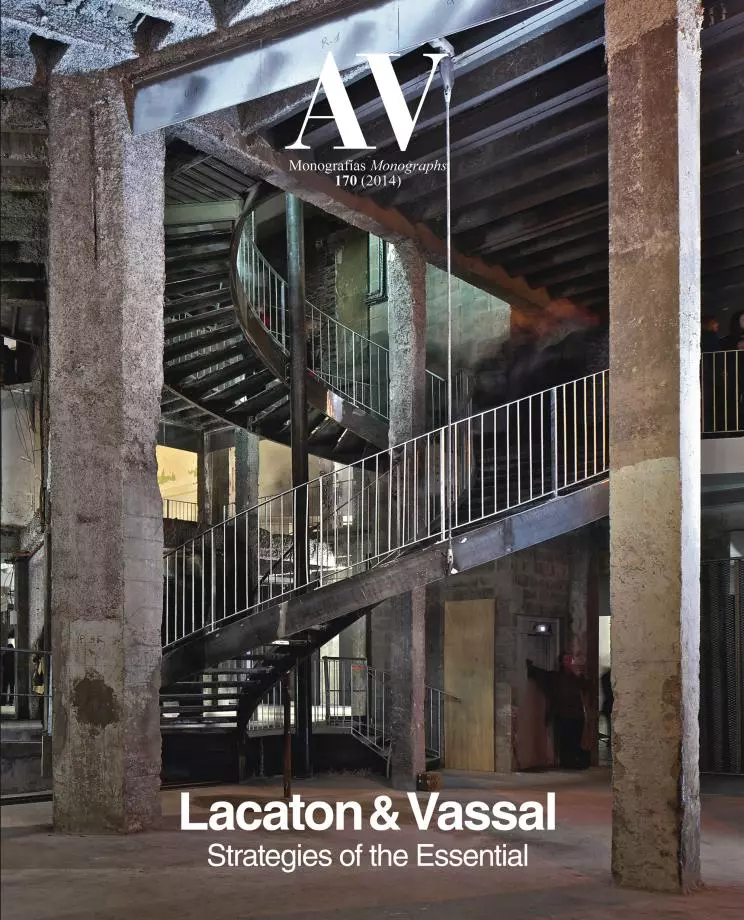
Init session and enjoy from Arquitectura Viva
Enter your username and password
Enter a valid email address
Enter your password
You need to enter at least 3 characters
Sorry, there arent any match using your search terms, please try again using other terms.
- Alphabetically
- Publications
Search tips
How to search:.
- Write your search in the text box.
- We suggest you known tags based on your text. You can use them for your text or just select 'SEARCH TEXT' .
- Your results will appear.
- You can continue adding queries to your search following steps 1 to 3 to limit the results and also filter by result type .
- Remember you can also do quoted searches for complex strings
- You also can seach by categories in our works , articles , books and products pages
- Share full article
Advertisement
Supported by
Architecture Review
At Edge of Paris, a Housing Project Becomes a Beacon

By Michael Kimmelman
- March 27, 2012
PARIS — Hard by the noisy highway, overlooking a cemetery and a former garbage dump, La Tour Bois-le-Prêtre glimmers on a spring morning. Sheathed in a fresh cloak of glass balconies and corrugated aluminum panels, it rises on the edge of this city amid a landscape of decaying cement-and-brick housing blocks.
This half-century-old tower used to be one of those blocks. Its makeover, by a creative team of local architects — Frédéric Druot, Anne Lacaton and Jean-Philippe Vassal — is a case study in architectural ingenuity and civic rejuvenation. It’s a challenge to urban innovators, too. Instead of replacing the old tower with an entirely new building, the designers saw what was worthwhile about the existing architecture and added to it.
Retrofitting, it’s called. Preservationists in America have argued for a long time about the benefits of reusing obsolete structures. Since some 80 percent of what’s been built in the United States has been constructed during the last 50 years, reuse seems like the inevitable wave of the future. The practice is not common when it comes to large public housing projects. But there have been a few successful attempts. This one is the latest.
Poor neighborhoods on the outskirts of Paris and in the city’s inner-ring suburbs are, as in many cities, dominated by these much-maligned projects from the 1960s and ’70s. Not long ago I visited Sevran, one of the poorest Paris suburbs, where the rioting that spread across France in 2005 started. Unemployment now hovers around 40 percent among the young there. Violence has gone up in the last couple of years. There was a shooting not long ago in a kindergarten.
Sevran is full of housing towers. French policy, similar to the American approach that has reshaped the inner cities of Chicago, Pittsburgh, Louisville and elsewhere, favors demolishing these projects and moving out tenants. Several towers have come down in Sevran, replaced by community gardens, sports fields, some new housing and a new school. More towers stand empty, awaiting destruction.
President Nicolas Sarkozy has proposed a vast extension of the Paris subway system that would link the city center with dozens of alienated suburbs like Sevran, along with new exurban commercial districts. Employment and growth depend on improved access to public transit.
Stéphane Gatignon, Sevran’s mayor, told me: “Urban renovation alone can’t solve our problems of unemployment and drugs. But it at least gives us the opportunity to live with more dignity.” Architecture has its natural and obvious limits, in other words. But it is powerful as well.
So it is with La Tour Bois-le-Prêtre, which sits on the farthest edge of the 17th arrondissement, a mixed district with persistent pockets of poverty, where a Métro extension would also go. The tower was a natural candidate for the French wrecking ball after decades of neglect and decay, but tenants didn’t want to lose their homes. So an unusual question arose: might the building become a candidate for a different approach?
A competition was organized by Paris Habitat, the Paris Office for Public Housing, in 2005 to renovate the building. The challenge: to repair the tower’s crumbling infrastructure, upgrade its common spaces and its exterior, and — this was the most radical part — add more light and square footage to dark, cramped apartments, without changing the footprint of the building, which couldn’t be extended.
Oh, yes, and to spend less money for all this than the cost of tearing the building down and then rebuilding.
Designed by Raymond Lopez and opened in 1961, the 16-story prefabricated concrete tower had already undergone an ugly, claustrophobic update during the 1980s. Various competitors proposed leaving the shell basically intact but gutting the interior. Ms. Lacaton, Mr. Vassal and Mr. Druot won the competition with a novel approach.
They would work from the inside out to improve light and space, giving the tower a fresh, larger skin by creating a shell to envelop the building. This would extend the apartment floor slabs to add winter gardens, or solariums, and balconies that would bring in abundant light and increase the size of all 96 apartments.
The proposal included a new lobby; new elevators, kitchens and bathrooms; and many new floor plans. It promised, unlike the other proposals, that the tenants wouldn’t need to move out for months on end, or years. This last part was crucial, because people removed from their homes for long stretches tend not to want to return. Ms. Lacaton, Mr. Vassal and Mr. Druot would displace them only for relatively short stints, and the retrofit would take less than two years.
The new winter gardens and balconies would be added using prefabricated modules erected like scaffolding around the outside. Punching through the old facade to connect these modules to the apartments would take only one day per apartment. Residents who left for work in the morning would return in the evening to find an entirely new, much larger home, with floor-to-ceiling glass doors opening onto glassed-in winter gardens that gave way to balconies with panoramas of the distant Eiffel Tower and La Défense.
Word started to spread about the tower before it was finished. The design was featured in a show at the Museum of Modern Art in New York in 2010. Construction, which began in 2009, was completed a few months ago.
Little more than half of what demolition and rebuilding would have cost: $15 million, compared with $26 million.
I went to the tower with Ms. Lacaton the other day, to see how it looked and talk with tenants.
It seemed elegant and airy. One tenant griped about the broken elevator, another about the “shady” kids who gather in the newly painted bright green hallways, now full of light and large windows. The halls have become more attractive places for them, and there’s no security to kick them out. Ms. Lacaton listened politely.
“No,” Sister Ann-Marie Mevellec, a decade-long resident, said when I asked her whether she liked the changes to her apartment. She smiled beneficently. The kitchen was too small, she said; the winter garden was too cold in winter, too hard to keep clean. She missed her old loggia, where she grew vegetables.
In Paris, a Housing Tower Transformed
View Slide Show ›
Unheated winter gardens and balconies often go unused in modern apartment towers. Many of the ones I saw functioned like closets. But they added light and space. Sister Ann-Marie conceded that the building was on the whole better. Energy costs have been cut by 60 percent. The tower has new sunny common spaces.
Marie-Jean Benjamin, a retired hairdresser who raised seven children in the apartment she has occupied for 47 years, told me she remembered the building when it had just opened as a dark, cramped place in a terrible neighborhood making way for the ring road. Back then, interior plumbing was a luxury for a poor family looking for a decent home. She showed me her new bathrooms and kitchen and the winter gardens onto which she had moved her bar, some tomato plants and an exercise bike.
“I’m proud of the building,” she said.
The corrugated plastic windows the architects chose for some of the winter gardens look smart, lowered costs and provide privacy for tenants from the outside. But they also obscure views from the inside.
Those shimmering corrugated aluminum panels that cover parts of the facade refract light. They change color with the hours and the seasons, like budget titanium, dissolving the mass of the building. But they’re hard are to keep clean. No matter how energy-efficient, economical and handsome a work of architecture may be, it still depends on upkeep and security. Ms. Lacaton said she was rethinking the materials she would use for a similar, much larger retrofitting in Bordeaux.
Jeanine Gaillard, 81, in scarf and loafers, a resident in the tower for 21 years, was at that moment dragging her wheeled canvas shopping basket outside the tower toward the highway. She lamented that the nearest grocery story was on the other side of the ring road, blocks away.
“It depends how you ask the question,” Ms. Lacaton responded when asked whether the building ended up as she had hoped. Architects couldn’t fix the neighborhood or provide 24-hour security guards, she said. But they could make something pleasing whose appearance derived from the narrow range of material options available, within a tight budget.
“The aesthetics arose purely from the decisions about the quality of space,” Ms. Lacaton insisted. “We could have done something playful and fashionable on the outside, to look better, if we had put just a few balconies here and there. But our priority was improving the living conditions for everyone.”
They’ve done that, adding an exemplary landmark to the Paris skyline.
Arts and Culture Across Europe
A production of “Richard III” at the Shakespeare’s Globe theater faced criticism because a nondisabled actor plays the scheming king. But disputes like these miss the point , our critic writes.
The violent history of the Dutch colony that is now New York is not well known in the Netherlands. The curators of a new exhibition at the Amsterdam Museum want to change that.
The Victoria and Albert Museum in London is a treasure trove of art and design. Here’s one besotted visitor’s plan for taking it all in .
The Royal Shakespeare Company’s co-artistic directors have put together a challenging debut season . But many visitors come to Stratford-upon-Avon seeking something more traditional.
The Venice Biennale, the art world’s most prestigious exhibition, opened recently to some fanfare, some criticism and a number of protests . Here’s a look at some of the standouts from the 2024 edition.
- Login / Register
- You are here: Today
Lacaton & Vassal’s revitalisation of a Parisian tower block
22 December 2011 By Andrew Ayers Today

1/16 Balconies offer vertiginous vistas over Paris with the towers of La Défense in the distance

2/16 The 17-storey tower now enhances the city skyline

3/16 Framing Views

4/16 One of the new winter gardens. Sliding doors open up to extend the apartments

5/16 The new lobby is now more easily accessible on a single level that meets the street

6/16 Tour-le-pretre, Paris

7/16 Tour-le-pretre, Paris

9/16 The original poky fenestration is replaced by floor-to-ceiling glazing. Winter gardens can be colonised as tenants choose and the 2m wide space also forms an environmental and acoustic buffer zone

10/16 Buffer Zone

11/16 New winter gardens and balconies open up the flats to light and views

12/16 Views from Balcony

13/16 The new entrance provides a more inviting approach to the block

14/16 The building’s quasi-industrial palette of metal, glass and ribbed polycarbonate echoes the muted slate and zinc of Parisian rooftops

15/16 The system-built Tour Bois-le-Prêtre dates from 1961. Designed by Raymond Lopez and Eugène Beaudouin, the tower was constructed as part of the Porte Pouchet estate in the 17th arrondissement

16/16 The block was reclad and restyled in the early 1990s, with its original chequerboard facade replaced by coloured panels to improve thermal performance. However, this plastic PoMo treatment did little to improve the building’s declining reputation
The striking transformation of a run-down tower in northern Paris suggests an alternative approach to the physical and social redevelopment of decaying post-war housing

While the fall of Pruitt-Igoe in 1972 may not, with hindsight, have heralded the death of Modernism, it certainly marked a turning point in the fortunes of technocratic, high-density, high-rise social-housing schemes. In the wake of Pruitt-Igoe’s destruction, manycountries began to look for alternatives, and the destiny of numerous Modernist estates would follow the Pruitt-Igoe pattern.
Lately, however, the appositeness of such seemingly wanton destruction has been called into question in light of the environmental impact and implicit waste of resources that demolition/reconstruction represents. In this context, refurbishment is increasingly being proposed as potentially the better option when the original structures are sound.
A much-publicised British example was the recent revamp of the Park Hill estate in Sheffield (AR October 2011). In France, a country that built a huge quantity of Modernist grands ensembles during the 30 years after the Second World War, the question of what to do with ageing slabs and towers is a growing preoccupation.
Over the past two decades, demolition has often been the preferred option, on ideological and economic grounds. On the one hand, the image of high-rise estates was held to be irredeemably tarnished, whereas on the other it was thought that demolition/reconstruction was the cheaper and easier option, given that 1960s norms of energy consumption and thermal performance were so far behind today’s standards.
History of the tower

The system-built Tour Bois-le-Prêtre dates from 1961. Designed by Raymond Lopez and Eugène Beaudouin, the tower was constructed as part of the Porte Pouchet estate in the 17th arrondissement

The block was reclad and restyled in the early 1990s, with its original chequerboard facade replaced by coloured panels to improve thermal performance. However, this plastic PoMo treatment did little to improve the building’s declining reputation
In recent years, rehabilitation has generally been considered only where gentrification or the legal obligation to preserve the historic fabric were concerned. With the refurbishment of this Parisian tower block, architects Frédéric Druot and Lacaton & Vassal set out to prove that not only could the building’s image and accommodation be successfully upgraded, but that renovation could largely satisfy all current requirements − including energy performance − for considerably less investment than demolition/reconstruction.
Built during 1959-61 as part of the Porte Pouchet estate in the 17th arrondissement, the 17-storey Tour Bois-le-Prêtre stands on the city boundary, next to the eight-lane motorway that is the Boulevard Périphérique (a ring road post-dating the tower). Its initial architect was Raymond Lopez, who, with Eugène Beaudouin, had erected an almost identical tower in Berlin’s Hansaviertel (constructed as part of the 1957 Interbau and still in its original state).
System-built, the Tour Bois-le-Prêtre provided 96 apartments of three types: 32 six-room flats, 28 three-room flats and 36 two-room flats. In the early 1990s, the original chequerboard facade was replaced to improve insulation and to restyle the tower along more modern lines. With hindsight, the 1950s facade appears the more elegant, and the revamp did nothing to improve the tower’s reputation: residents called it Alcatraz, and many chose to leave.

A little over a decade later, the tower’s owner, Paris Habitat-OPH (a public-sector social-housing institution), was seriously considering demolition, but eventually opted to try out full refurbishment on an experimental basis. For one thing, most residents said they did not want to see the tower destroyed: its dwellings more or less met their needs and they appreciated the sweeping views, light, air and surrounding greenery it provided.
Moreover, the structure was sound. In 2005, five architects (including Dominique Perrault) were invited to submit proposals. For the winning team, this was a chance to put into practice ideas they had been developing for several years, codified in a 2004 report to the Ministry of Culture.
Where the original fabric was concerned, the architects’ intervention was relatively minimal. As well as upgrading all the kitchens, bathrooms and wiring, they tinkered with apartment configurations to provide more diverse layouts. One of the principal tenets in their report was that, to be viable, the concept of sustainable development must include a certain generosity, that pleasure and spiritual wellbeing should be part of the equation.
Increasing space within categories of apartments was one proposal in this direction, and was partly motivated by the fact that recent French social-sector dwellings are considerably smaller than those built in the past.The architects proposed ways of providing more space for the same construction cost, with the proviso that rents no longer be indexed to square footage but instead to construction cost per dwelling.
At the Tour Bois-le-Prêtre, extra space was partly achieved through the reclassification of some apartments: for example, a number of small two-bedroom flats were ‘downgraded’ to large one-room studios through the demolition of internal partitions. Others were enlarged through the appropriation of corridor space. In the revamped tower there are now seven different apartment types, ranging from one to seven rooms, and the total number of dwellings has risen to 100 flats.

One of the new winter gardens. Sliding doors open up to extend the apartments
This increase was made possible by the architects’ major intervention, extending the tower on all four sides through the addition of self-supporting steel structures. On the short sides of the tower, these include extra rooms (two per floor) and new glass lifts that, as well as offering panoramic views, allowed for the removal of one of the old internal elevators to add space to the apartments.
On all the other facades, the 3m-wide extensions consist of closed, but unheated winter gardens (2m) with external balconies (1m). There is no loss of daylight inside the apartments because the original exterior walls, with their mean fenestration, have been entirely replaced by glass, in the form of floor-to-ceiling sliding doors. If anything, much more daylight filters inside than before.
The winter gardens serve several purposes. In cold weather, they provide highly effective insulation, so much so that the architects expect heating bills to be cut by 50 per cent (noise from the Périphérique is also reduced). In the summer, in tandem with their balconies, they provide shade from the sun, thereby keeping the apartments cooler than before (all the flats have been provided with sun drapes in the winter gardens, coupled with reflective silver linings on the curtains).
But perhaps, most importantly, the winter gardens enhance the pleasure of living in these apartments, offering an unprogrammed space that, temperature-permitting, can be used for all sorts of activities, as well as diversifying circulation routes through the flats.

Residents who could only dream of having a garden now enjoy an ‘outside’ space of between 15m² and 60m² (depending on apartment size), while the new, all-glass facades allow for a full appreciation of the spectacular views across Paris. Former tenants are now begging to come back, and the project recently won the 2011 Équerre d’Argent, France’s most prestigious architecture prize for an individual building.
Moreover, it is not just the Tour Bois-le-Prêtre’s inhabitants who gain, but the city as a whole. A tower of this size has an enormous visual impact. Rendered distinctly unprepossessing by the 1990 refit, it is now completely transfigured, the plastic PoMo blush transformed into silver-sleek urbanity. The new palette echoes the slate and zinc of Parisian rooftops, which merge with the sky on overcast days.
But while from afar the tower may now resemble the upmarket Modernist apartments that dominate Paris’s wealthy western districts, a closer look belies this similarity. Lacaton & Vassal is known for its arte povera aesthetic, and it is deployed to full effect here: raw-concrete floor finishes, galvanised steel railings, lacquered aluminium panels, corrugated polycarbonate glazing, space-age sun-filter stripes, silver foil curtain linings − hard-nosed, pared-down, streetwise.

So what was the cost of this magical metamorphosis? The overall budget, net of tax, came in at €11.2 million (£9.5 million), or €112,000 (£95,000) per dwelling. Paris Habitat estimates demolition/reconstruction would have cost at least €20 million (£17 million). And there are many other savings besides this €8.8 million (£7.5 million) difference. Demolition would have meant rehousing everyone while reconstruction was undertaken, at enormous expense; as it was, residents remained in situ while the work was carried out, apart from brief stays in temporary accommodation.
A community was saved − some residents had lived in the tower since the 1960s − and if anything was strengthened by the renovation. Demolition is sometimes a way for landlords to get rid of tenants, since new accommodation is often more expensive, so Paris Habitat’s decision to avoid this route is all the more commendable. That said, rents at the Tour Bois-le-Prêtre are programmed to rise over the next few years to reflect the improved nature of the apartments, but the increase should be offset by the drop in energy bills, if the building performs as it should.
Then, of course, there is the economy of resources, not only in the context of sustainable development and the carbon footprint, but also in terms of the current social-housing shortage in France. As Anne Lacaton points out, the reality of the situation is that demolition/reconstruction usually means more is destroyed than built, while new build is too expensive to allow for adequate development: ‘Transforming an existing property… represents the only opportunity to go much further in the design of new ways of living.’ Hence the architects’ dictum: ‘It’s a question of never demolishing, never removing or replacing, but always adding, transforming and using.’

Architects: Frédéric Druot Architecture Associate architect: Lacaton & Vassal Structural engineer: VP Green Services engineer: INEX Photographs: Frédéric Druot Architecture
January 2012

Since 1896, The Architectural Review has scoured the globe for architecture that challenges and inspires. Buildings old and new are chosen as prisms through which arguments and broader narratives are constructed. In their fearless storytelling, independent critical voices explore the forces that shape the homes, cities and places we inhabit.

Join the conversation online
METAMORPHOSE DE LA TOUR BOIS LE PRETRE
Prix de l’Equerre d’Argent 2011
> Maître d’ouvrage
Paris Habitat
> Architecte mandataire
Frédéric Druot Architecture
> Architectes associés
Anne Lacaton & Jean Philippe Vassal
> Coordination travaux MOE
BATSCOP, Laurent Chapus
> Etudes Fluide
> Etudes Structure
> Economie
E2I / Vincent Pourtau
> Acoustique
Gui Jourdan
> Sécurité incendie et accessibilité
> Surface SHON
12 460 m² (dont 8900m²existant)
> Coût des travaux
11,25 M.euros HT
> Livraison
Novembre 2011
> Missions
Mission de base, Diagnostic, Concertation
>> Book Français (PDF)
>> Book English (PDF)
FREDERIC DRUOT ARCHITECTURE
5 RUE AUBER 75009 PARIS
PUBLICATIONS
Druot, Lacaton & Vassal – Tour Bois Le Prêtre
18,00 €
Out of stock
- Editors: Ilka & Andreas Ruby and German Architecture Museum (DAM)
- Language: English/German
- Published in: 2012
- ISBN: 978-3-944074-00-9
The book presents Frédéric Druot’s and Lacaton & Vassal’s retrofit of Tour Bois le Prêtre, a decaying residential tower on the outskirts of Paris that even though occupied was envisioned for demolition. The architects renovated the existing structure and apartments while the inhabitants continued to live in them. Although the living area of each apartment increased by about 40 percent, the rents stayed the same. Nevertheless, the entire project cost less than what the French government had originally planned to spend on demolition the existing building and erecting a new one. More than an architectural project, the Tour Bois-le-Pretre offers a model for architects, planners, conservationists, developers, and politicians to engage with one of the most important challenges in the coming dacades: the physical and social rehabilitation of the mass-produced housing developments of the 1960s and 1970s across Europe.
With photos by Philippe Ruault, Frédéric Druot, Torben Eskerod and Lacaton & Vassal.
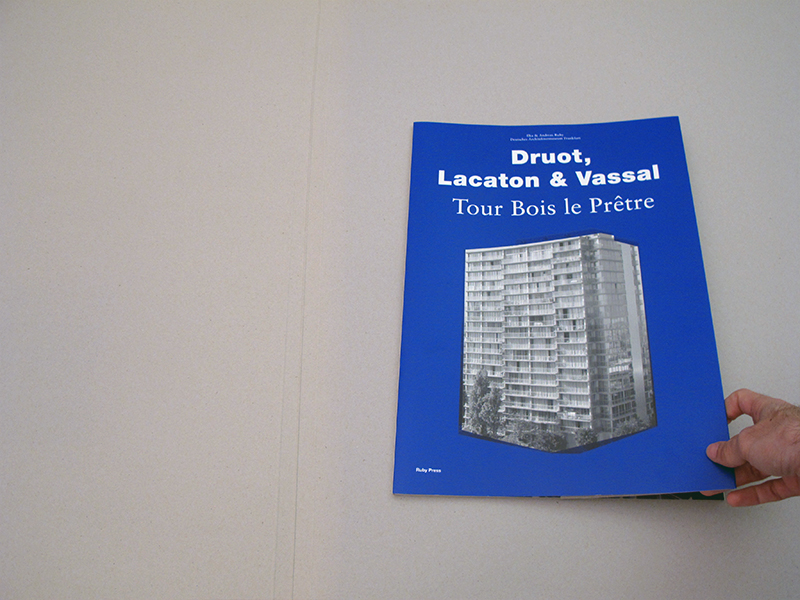
You are using an outdated browser. Please upgrade your browser to improve your experience.
HOUSE OF THE WEEK: Tour Bois le Prêtre transformation by Lacaton & Vassal and Frédéric Druot

WHAT WE'RE READING: Cities Are Good for You by Leo Hollis

ARCHITECT OF THE WEEK: Peter Aldington for creating a magical transition between house and garden

Introduced by Owen Hatherley as the solution to London’s housing troubles in his recent talk for Open House 2013 , Tour Bois de Prêtre is primarily interesting because of its innovative programme. This 16-storey, 96-apartment housing block in the 17th arrondissement of Paris was originally completed in the 1960s and renovated with coloured panels in the early 1990s , but again 15 years later it was in desperate need of repair and modernisation to meet current standards. Initial ideas proposed complete demolition, however, this would have displaced all of the residents who were social housing tenants. Architects Lacaton & Vassal and Frédéric Druot were tasked instead with its transformation, retaining its floor plates and much of its internal layout. New floors, built as a self-supporting structure, were added onto the periphery of the existing building at every floor to extend the living rooms and create closeable terrasses and balconies. The existing facades with small windows were removed and replaced by large transparent openings so that the inhabitants could profit from the exceptional 360 degree views of Paris.
What is most interesting, however, is that the improvements were constructed from prefabricated elements, which meant that the inhabitants remained in their homes during the construction works. Hatherley’s argument was that Britain should look to Paris’ planning department for its policies in London. He suggested that the demolition of 1960s and 1970s housing estates, like the Heygate Estate , is causing mass disruption to communities and, what’s more, their homes are all too frequently replaced with sub-quality buildings to minimise cost. Hatherley opposes the argument in London is that it is cheaper to demolish than to renovate. Tour Bois le Prêtre proves otherwise: calculations estimated that its renovation was half the cost of its demolition and rebuilding. For the daring of its planners and innovation of its architects to create comfortable homes from disliked old buildings, Tour Bois le Prêtre is our House of the Week . For more information on the architects and to see an enormous collection of interior shots, visit: Lacaton & Vassal
Related stories

House of the Week: Crab Creek House by Robert Gurney

House of the week: House in Gundelpet by Architecture Paradigm

HOUSE OF THE WEEK: Witthoefft House

HOUSE OF THE WEEK: Casa Gomis by Antonio Bonet Castellana

HOUSE OF THE WEEK: The Stanley Picker House

HOUSE OF THE WEEK: Horizontal House, Shiga, Japan


HOUSE OF THE WEEK: The Lignon Housing Complex, Geneva

HOUSE OF THE WEEK: House Van Wassenhove by Juliaan Lampens

HOUSE OF THE WEEK: Almere House by Benthem Crouwel Architects

HOUSE OF THE WEEK: Keck and Atwood's experimental steel houses

HOUSE OF THE WEEK: Binh Thanh House by Vo Trong Nghia Architects and Sanuki Nishizawa

HOUSE OF THE WEEK: Pink House in Miami by Arquitectonica

HOUSE OF THE WEEK: Eigen Haard housing by Michel de Klerk, Amsterdam

HOUSE OF THE WEEK: Yakisugi House (Charred Cedar House) by Terunobu Fujimori

HOUSE OF THE WEEK: Paul Chemetov home/studio, Paris

HOUSE OF THE WEEK: The Wave by Henning Larsen Architects

HOUSE OF THE WEEK: House H by Sou Fujimoto, Japan

HOUSE OF THE WEEK: Bjarke Ingels Group's 8 House, Copenhagen

HOUSE OF THE WEEK: Villa de Madame Manorama Sarabhai, Ahmedabad, India

HOUSE OF THE WEEK: Galvani House by Christian Pottgiesser

Paris Apartments
- Walking Tours
- Paris Weekends
Paris People
- Paris Archives
Wednesday 7 December 2011
- The Tour Bois-le-Prêtre: making the social desirable

4 comments:
Hello Adam, I'm always eager to see posts like this one because they show how communities are coming together and thinking about sustainable housing options and needs for accommodation.I'm curious to know whether, for example, there is wheelchair-adapted housing available in these?
Thanks for your comment e. There definitely seems to be a desire to create a community here, with the infrastructure (creche, schools - including the only 'international' college/lycée in the pulic sector at the end of the street) already in place. You raise a very good point about wheelchair-adapted housing. I'm still shocked by how little is adapted in France to the disabled, with the result being that you simply don't see people in wheelchairs in the city. Certainly the tower is adapted. There are no steps up from street level, and there are of course large lifts in the building (another plus point compared to the traditional Haussmannian building). I would certainly hope that these other new structures include everything necessary to make them adapted to wheelchair users, but I'm afraid that in France this still isn't a subject that is sufficiently wel dealt with by developers and urbanists.
Nice job by the architects (may not include the original one!)! :-) Now, or course, we see one of the top floors. What about those on the level of the pereferique? I know, this is not easy and flats for normal income people are needed... but basically I believe that buildings around these big traffic flows shoule rather be offices. Another question is what will reamain of the 1960 architecture? Not much, you may add hopefully, but will we one day regret that nothing has been left? Well , I guess that nobody would regret this building in its original form.
greatn blog, these architects have a lot to answer for er?
Post a Comment
Search Invisible Paris
Order my book.

Blog Archive
- ► August (5)
- ► July (4)
- ► June (4)
- ► May (5)
- ► April (4)
- ► March (5)
- ► February (4)
- ► January (4)
- ► May (1)
- ► September (1)
- ► June (1)
- ► February (1)
- ► January (1)
- ► December (1)
- ► October (1)
- ► September (2)
- ► August (1)
- ► June (2)
- ► April (1)
- ► March (1)
- ► November (1)
- ► March (2)
- ► July (1)
- ► May (2)
- ► January (3)
- ► December (4)
- ► November (2)
- ► July (3)
- ► April (2)
- ► February (2)
- ► January (2)
- ► December (3)
- ► November (3)
- ► October (2)
- ► September (3)
- ► August (2)
- ► July (2)
- ► June (3)
- ► March (4)
- ► February (3)
- ► January (5)
- ► December (5)
- ► November (6)
- ► October (5)
- ► September (6)
- ► June (6)
- ► May (4)
- ► April (5)
- ► March (7)
- ► February (5)
- ► January (8)
- The Top 5 posts of the year
- A Christmas message from Paris
- Things to do in Paris over the holidays
- Introducing...Invisible Bordeaux
- A ghost sign of Christmas past
- A Psychogeographic field report from the Palais de...
- My Paris Soundlandscape
- ► November (10)
- ► October (8)
- ► September (9)
- ► August (7)
- ► June (9)
- ► May (8)
- ► March (9)
- ► February (9)
- ► January (11)
- ► December (7)
- ► November (13)
- ► October (10)
- ► September (12)
- ► August (10)
- ► July (9)
- ► April (12)
- ► March (12)
- ► February (12)
- ► January (13)
- ► December (19)
- ► October (13)
- ► August (9)
- ► July (10)
- ► June (13)
- ► May (13)
- ► February (11)
- ► December (9)
- ► September (8)
Contributor to the...
Enter your email address:
Invisible Paris Walks
Challenge me, popular posts.

City Snapshots
Lovely invisible people, the paris archives, the invisible man.


Download the free Kindle app and start reading Kindle books instantly on your smartphone, tablet, or computer - no Kindle device required .
Read instantly on your browser with Kindle for Web.
Using your mobile phone camera - scan the code below and download the Kindle app.

Image Unavailable

- To view this video download Flash Player
Druot, Lacaton & Vassal - Tour Bois Le Pretre Paperback – March 6, 2013
- Print length 78 pages
- Language English, German
- Publisher Ruby Press
- Publication date March 6, 2013
- Dimensions 11.81 x 0.28 x 16.54 inches
- ISBN-10 3944074009
- ISBN-13 978-3944074009
- See all details

Product details
- Publisher : Ruby Press (March 6, 2013)
- Language : English, German
- Paperback : 78 pages
- ISBN-10 : 3944074009
- ISBN-13 : 978-3944074009
- Item Weight : 1.33 pounds
- Dimensions : 11.81 x 0.28 x 16.54 inches
- Best Sellers Rank: #8,789,873 in Books ( See Top 100 in Books )
Customer reviews
Customer Reviews, including Product Star Ratings help customers to learn more about the product and decide whether it is the right product for them.
To calculate the overall star rating and percentage breakdown by star, we don’t use a simple average. Instead, our system considers things like how recent a review is and if the reviewer bought the item on Amazon. It also analyzed reviews to verify trustworthiness.
- Sort reviews by Top reviews Most recent Top reviews
Top reviews from the United States
Top reviews from other countries.
- Amazon Newsletter
- About Amazon
- Accessibility
- Sustainability
- Press Center
- Investor Relations
- Amazon Devices
- Amazon Science
- Sell on Amazon
- Sell apps on Amazon
- Supply to Amazon
- Protect & Build Your Brand
- Become an Affiliate
- Become a Delivery Driver
- Start a Package Delivery Business
- Advertise Your Products
- Self-Publish with Us
- Become an Amazon Hub Partner
- › See More Ways to Make Money
- Amazon Visa
- Amazon Store Card
- Amazon Secured Card
- Amazon Business Card
- Shop with Points
- Credit Card Marketplace
- Reload Your Balance
- Amazon Currency Converter
- Your Account
- Your Orders
- Shipping Rates & Policies
- Amazon Prime
- Returns & Replacements
- Manage Your Content and Devices
- Recalls and Product Safety Alerts
- Conditions of Use
- Privacy Notice
- Consumer Health Data Privacy Disclosure
- Your Ads Privacy Choices

DÉCOUVREZ L'ARCHITECTURE DE PARIS ET SON HISTOIRE
SUIVEZ NOUS
NEWSLETTER : suivez notre actualité et recevez en cadeau un parcours architectural du Marais
« * » indique les champs nécessaires
- PARIS PROMENEURS
- PATRIMOINE ANCIEN
- LIEUX INSOLITES
- ARCHITECTURE MODERNE
- GRAND PARIS
Visites historiques
Visites insolites, visites des villages de paris, visites architecturales, la réhabilitation de la tour bois-le-prêtre, des panneaux de béton préfabriqués.
La tour Bois-le-Prêtre est bâtie de 1959 à 1962 par l’architecte Raymond Lopez (1904-1966). C’est le premier immeuble de grande hauteur (50m) construit dans la cadre de l’urbanisation de la zone couvrant le nord des 17e et 18e arrondissement . Le bâtiment utilise un système constructif industriel de préfabrication mis au point en 1957 par les architectes Raymond Lopez et Eugène Beaudouin pour un immeuble du quartier de Tiergarten à Berlin. Les éléments préfabriqués sont assemblés pour former une trames de voiles béton de 16cm d’épaisseur et de planchers béton de 26 cm d’épaisseur.
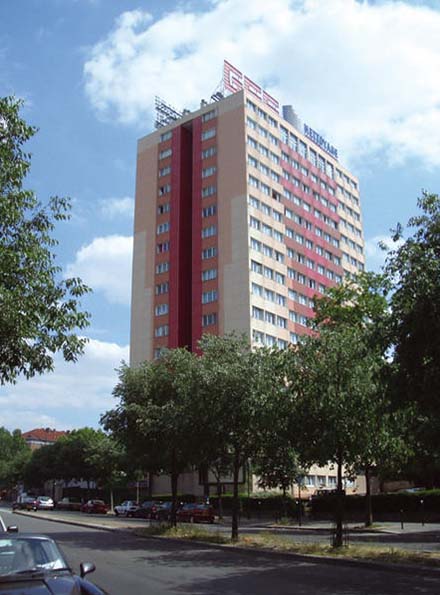
La Tour Bois-le-Prêtre avant réhabilitation ©Druot, Lacaton & Vassal
Une réhabilitation complexe
La tour Bois-le-Prêtre comporte 8 étages et offre une centaine de logements sociaux. Dans les années 2000, elle est menacée de destruction avant qu’un projet de réhabilitation ne soit finalement décidé. En 2005, les architectes Frédéric Druot, Anne Lacaton et Jean-Philippe Vassal sont lauréats du concours lancé pour sa réhabilitation. La restructuration s’annonce complexe puisque l’immeuble doit pouvoir rester occupé pendant les travaux.
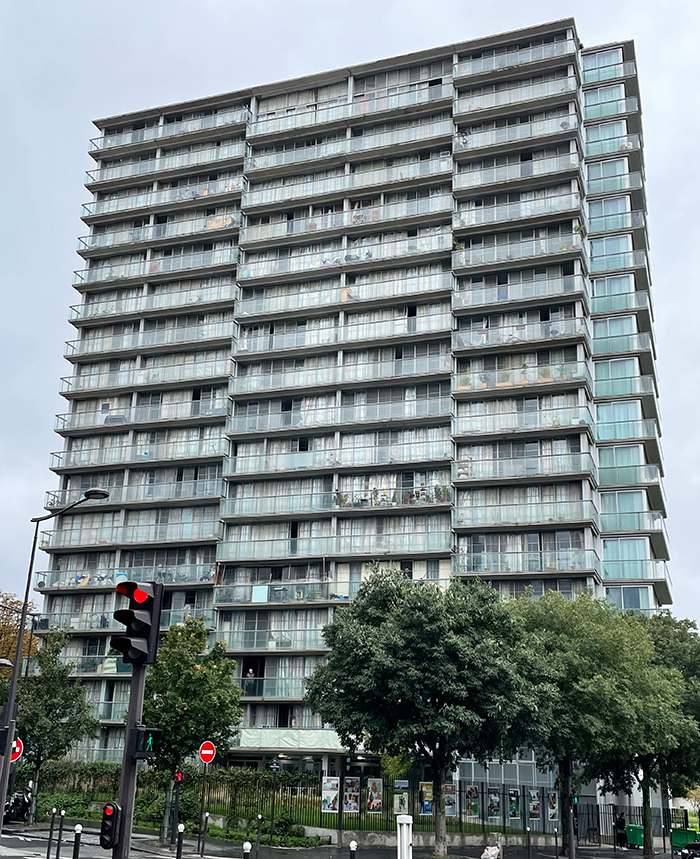
La tour Bois-Le-Prêtre
L’ajout de jardins d’hiver et balcons
Le projet a consisté à ajouter en façade des jardins d’hiver (de 16 à 33 m2) prolongés par des balcons (de 6 à 18m) , grâce à la greffe de couronnes de planchers sur la périphérie de l’immeuble. En conséquence, la surface des logements est accrue sans modifier le prix des loyers. De plus, l’habitabilité des logements est fortement améliorée : les façades de verre donnent un apport massif de lumière à l’intérieur; elles garantissent une isolation thermique et acoustique plus performante. Deux ascenseurs ont été ajoutés sur les pignons pour permettre l’accessibilité aux handicapés.
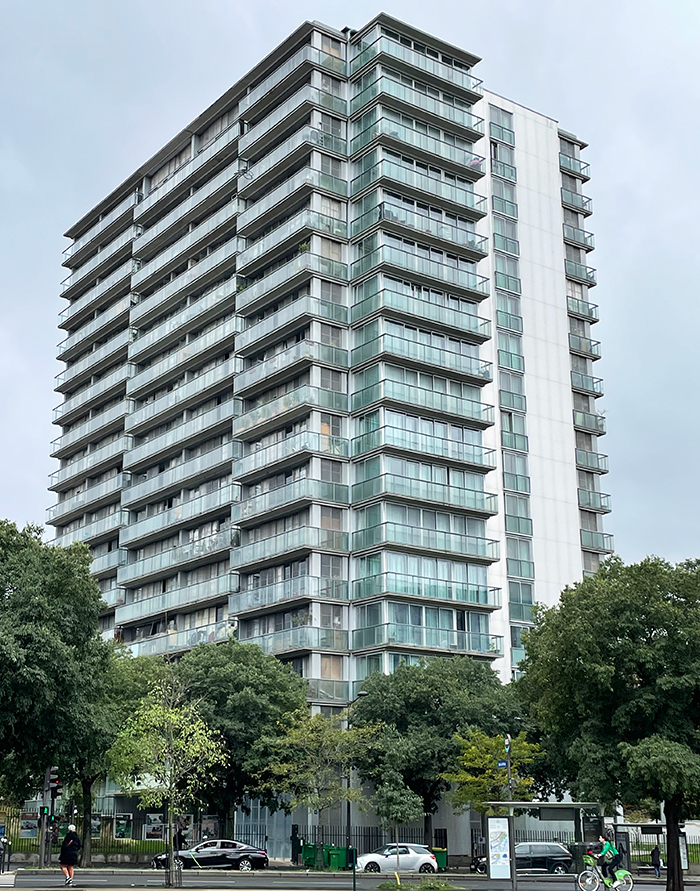
Une écriture minimaliste
Cette réhabilitation à la fois élégante et fonctionnelle semble s’inscrire dans une certaine continuité : au modernisme de Raymond Lopez s’est superposée une écriture minimaliste , qui fait d’ailleurs la singularité des architectes Anne Lacaton et Jean-Philippe Vassal. La rénovation de la tour Bois-le-Prêtre a été récompensée par le Prix de l’Equerre d’argent en 2011 . Les architectes Anne Lacaton et Jean-Philippe Vassal ont reçu le Pritker Prize en 2021, prix considéré comme le Nobel de l’architecture.
Pour l’architecte Raymond Lopez , voir également le siège du groupe Naval , le siège de la Fédération nationale du Bâtiment , le centre d’affaires Paris Cap Nord .
Pour les architectes Anne Lacaton et Jean-Philippe Vassal , voir également le palais de Tokyo .
Adresse : 5-9 boulevard Bois-le-Prêtre
Métro : Porte de Saint-Ouen
Arrondissement : 17e
Téléphone :
VISITES GUIDÉES

- Create new account
- Request new password
go to OnArchitecture Institutional

Architecture Videos Onarchitecture
Video-on-demand archive of architecture. since 2008., search form.
- All products
- Collections
- Log in / Register
Tour Bois-le-Prêtre

Transformation of a residential tower built in the early 60s along the ring road of Paris by French architects Lacaton & Vassal and Fréderic Druot. Final commentaries by German editor and critic, Andreas Ruby.
Transformación de un edificio residencial construido al inicio de la década del 60 en una zona contigua al anillo periférico de París, por los arquitectos franceses Lacaton & Vassal junto a Fréderic Druot. Comentarios finales del editor y crítico alemán, Andreas Ruby.


- Places of interest
- Yuri Gagarin Cosmonaut Training Center
- Central Museum of the Air Forces at Monino
- Peter the Great Military Academy
- Bykovo Manor
- Balashikha Arena
- Ramenskii History and Art Museum
- Malenky Puppet Theater
- Balashikha Museum of History and Local Lore
- Pekhorka Park
- Saturn Stadium
- Orekhovo Zuevsky City Exhibition Hall
- Noginsk Museum and Exhibition Center

COMMENTS
La Tour Bois le Prêtre est un ensemble d'immeubles de logements de grande hauteur (50m), construit dans les années 60, en bordure du périphérique du nord parisien. Il comprend 96 appartements du niveau 1 au niveau 16, soit 32-6 pièces, 28-3 pièces, 36-2 pièces.
Tour Bois-le-Prêtre by Frédéric Druot, Anne Lacaton and Jean-Philippe Vassal. This renovation of a crumbling 1960s tower block in Paris nicknamed "Alcatraz" topped the architecture category of ...
2006-11. Paris, France. Frédéric Druot, Anne Lacaton, and Jean Philippe Vassal. Views of exterior before and after transformation [2] Tour Bois le Prêtre, Paris, animation. Photomontage of expansion strategy [3] Views of interior before and after transformation [2] Construction slideshow. Models of tower before and after transformation [2]
La tour Bois-le-Prêtre est un immeuble de grande hauteur parisien situé 6, rue Pierre-Rebière et 5-9, boulevard du Bois-le-Prêtre, dans le 17 e arrondissement de Paris, porte Pouchet dominant le cimetière des Batignolles, en limite des communes de Clichy et Saint-Ouen. De 2009 à 2011, la tour est entièrement rénovée par un projet ...
Lacaton & Vassal. Built in the 1960s by Raymond López, the Bois-le-Prêtre Tower is part of a group of high-rise apartments rising by the north ringroad of Paris. Their radical transformation is set forth as an alternative to the demolition-reconstruction policy initiated by the French government in 2003, and affecting the large residential ...
Frédéric Druot, Anne Lacaton, Jean Philippe Vassal. Tour Bois-le-Prêtre, Paris, France (Model after transformation). 2008. Acrylic, styrene and acrylic paint. 20 7/8 x 18 1/2 x 11 13/16" (53 x 47 x 30 cm). Gift of The Contemporary Arts Council of The Museum of Modern Art. 157.2012.2. Architecture and Design
March 27, 2012. PARIS — Hard by the noisy highway, overlooking a cemetery and a former garbage dump, La Tour Bois-le-Prêtre glimmers on a spring morning. Sheathed in a fresh cloak of glass ...
6/16 Tour-le-pretre, Paris. 7/16 Tour-le-pretre, Paris. 8/16. 9/16 The original poky fenestration is replaced by floor-to-ceiling glazing. Winter gardens can be colonised as tenants choose and the 2m wide space also forms an environmental and acoustic buffer zone ... 15/16 The system-built Tour Bois-le-Prêtre dates from 1961. Designed by ...
Le projet de métamorphose de la Tour Bois le Prêtre, consiste en la transformation radicale des conditions de confort et d'habitabilité des 100 logements de l'immeuble occupé. La tour construite en 1962 développe sur 50m de hauteur, 16 niveaux desservant chacun 4 ou 8 logements. Par ajout d'extensions chauffées, de jardins d'hiver ...
The Tour Bois Le Prêtre received a new sheath, which at the same time created new space for the small apartments. The old facade was replaced by a new one made of glass, in front of which, as with scaffolding, additional modules can be hung. These consist of winter gardens and balconies, separated from one another by floor-to-ceiling movable ...
TRANSFORMATION DE LA TOUR BOIS LE PRETRE, PARIS 17 FREDERIC DRUOT, ANNE LACATON & JEAN PHILIPPE VASSAL Site Boulevard Bois Le Prêtre, Paris 17 Maître d'ouvrage Paris Habitat (OPAC) Date Livraison 2011 Programme Transformation d'une tour de 100 logements en site occupé Surface 8 900 m2 existant + 3 560 m2 extensions (+35,6 m2 en moyenne ...
Transformation of 100 Units, Tour Bois le Prêtre, Social Housing (with Frédéric Druot), photo courtesy of Philippe Ruault. On a grander scale, Lacaton and Vassal, alongside Frédéric Druot, transformed La Tour Bois le Prêtre (Paris, France 2011), a 17-story, 96-unit city housing project originally built in the early 1960s. The architects ...
More than an architectural project, the Tour Bois-le-Pretre offers a model for architects, planners, conservationists, developers, and politicians to engage with one of the most important challenges in the coming dacades: the physical and social rehabilitation of the mass-produced housing developments of the 1960s and 1970s across Europe.
Introduced by Owen Hatherley as the solution to London's housing troubles in his recent talk for Open House 2013, Tour Bois de Prêtre is primarily interesting because of its innovative programme. This 16-storey, 96-apartment housing block in the 17th arrondissement of Paris was originally completed in the 1960s and renovated with coloured panels in the early 1990s, but again 15 years later ...
Designed by Frédéric Druot Architecture, Tour Bois-le-Prêtre transformed a 60's social housing project in Paris into a modern energy-efficient apartment complex.
1/18 Tour Bois-le-Prêtre. What was once a very bland apartment complex on the edge of Paris has been refurbished into a gleaming high-rise that saves a lot of resources and greatly enhances ...
The Tour Bois-le-Prêtre: making the social desirable. The Tour Bois-le-Prêtre, standing alongside the périphérique autoroute on the very limits of the city, has recently been transformed from a crumbling outcast to an award-winning structure. Could it show the way forward for high-rise structures around the world?
This large-format monograph gives an in-depth account of the history, transformation and revitalisation of a 1960s-era residential tower in northern Paris, as seen through the eyes of the French office of Druot, Lacaton & Vassal.
Une réhabilitation complexe. La tour Bois-le-Prêtre comporte 8 étages et offre une centaine de logements sociaux. Dans les années 2000, elle est menacée de destruction avant qu'un projet de réhabilitation ne soit finalement décidé.En 2005, les architectes Frédéric Druot, Anne Lacaton et Jean-Philippe Vassal sont lauréats du concours lancé pour sa réhabilitation.
Transformation of a residential tower built in the early 60s along the ring road of Paris by French architects Lacaton & Vassal and Fréderic Druot. Final commentaries by German editor and critic, Andreas Ruby.Transformación de un edificio residencial construido al inicio de la década del 60 en una zona contigua al anillo periférico de París, por los arquitectos franceses Lacaton & Vassal ...
Le 20 juin, lors du conseil municipal de Neuville-sur-Escaut, les élus se sont vus proposer par le maire Pascal Jean, de baptiser le Pont de Bois au nom du prêtre Joseph Nurchi, décédé le 30 ...
Welcome to the 628DirtRooster website where you can find video links to Randy McCaffrey's (AKA DirtRooster) YouTube videos, community support and other resources for the Hobby Beekeepers and the official 628DirtRooster online store where you can find 628DirtRooster hats and shirts, local Mississippi honey and whole lot more!
Elektrostal is a city in Moscow Oblast, Russia, located 58 kilometers east of Moscow. Elektrostal has about 158,000 residents. Mapcarta, the open map.
Cities near Elektrostal. Places of interest. Pavlovskiy Posad Noginsk. Travel guide resource for your visit to Elektrostal. Discover the best of Elektrostal so you can plan your trip right.